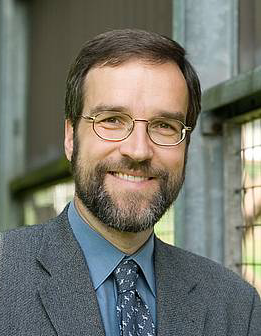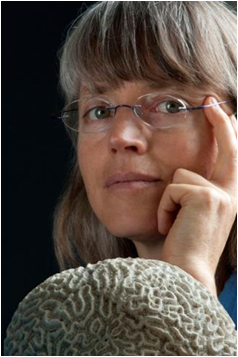Invited lectures
ECVP is famous for the quality of its speakers, and this year there will be two invited lectures by world-renowned scientists.
For the Perception lecture, we are honored to welcome Professor Nancy Kanwisher (McGovern Institute for Brain Research at MIT Cambridge, USA) who avails of a large background and experience in investigating principles of visual information processing, combined with related topics, like consciousness, attention and development.
For the Rank Prize lecture we will welcome Professor Stefan Treue (Cognitive Neuroscience Laboratory and Bernstein Center Göttingen, Germany), whose research focus on visual attention uniquely combines studies on the behavioural and cognitive level with electrophysiological recordings in primates.
 |
 |
| Stefan Treue | Nancy Kanwisher |
Perception Lecture is given by Nancy Kanwisher
Sunday, 25th August
The Functional Organization of the Ventral Visual Pathway in Humans
Over the last fifteen years, functional imaging studies in humans have provided a richly detailed view of the functional organization of the ventral visual pathway in humans. In this talk I will take stock of what we have learned so far, and attempt to identify the most important unanswered questions. In particular, functional imaging has powerfully complemented prior behavioral and neuropsychological work in enabling us to discover the major components of the processing machinery that holds our representation of the visual world. The most robust findings are a set of brain regions that respond selectively to faces, places, bodies, and objects. Each of these regions is found in approximately the same location in virtually every normal subject, thus constituting part of the fundamental architecture of the human visual mind and brain.
Beyond this widely-replicated set of results, though, lie numerous controversies and unanswered questions. First, does the representation of a given object occupy much of the expanse of the ventral pathway (the “distributed” view), or are some objects primarily represented in a small number of focal regions? Here I will argue that although pattern analyses do show that many category-selective regions hold some information about nonpreferred stimuli, the important question is which of this information is used, that is, which plays a causal role in perception – a question that is hard to address with neuroimaging but that can be tackled with TMS, electrical stimulation, and patient studies. Second, how does the functional organization of the ventral pathway arise in development, and why do the functionally specific regions land where they do in the brain? Here I will argue that in contrast to widespread claims, much of the organization of the ventral pathway (including the FFA) is nearly adultlike by late childhood. These results underscore is the importance of looking at much younger children or even infants, something that is nearly impossible with fMRI in humans. Further, the deepest questions about the development of the ventral pathway concern the role of experience, and the question of whether an early-developing functional or structural organization instructs the later development of category-selective cortical regions – questions that are currently wide open. Third, we have not made enough progress on the central problem of characterizing the representations and computations that exist in each of these regions, a question that may require the temporal and neuron-level precision available only in animal models. Fourth, what is the connectivity of each of these regions to each other and the rest of the brain? Although clues are emerging from diffusion and resting functional studies, neither method is perfect, leaving this fundamental question largely unanswered.
Perhaps the biggest open question concerning the functional organization of the ventral visual pathway is whether functionally distinctive regions are best thought of as discrete processors, or whether it makes more sense to consider the whole ventral pathway as a single processor in which each of these regions simply constitutes a local peak in the functional response. To the extent that the different regions have distinctive connectivity and cytoarchitecture, that would support the interpretation of these regions as distinct entities. On the latter view, the question would still remain of why that landscape would contain the particular replicable configuration it does, and what if any are the dimensions represented by axes of this broader 'map'.
Rank Prize Lecture is given by Stefan Treue
Wednesday, 28th August
Attentional modulation of the processing and perception of visual motion
Our senses provide much more information to the central nervous system than can be adequately processed. We use attention as a powerful mechanism for shaping cortical information processing to reflect the current relative behavioral relevance of the various pieces of incoming information. One prominent neurophysiological effect of allocating attention is the modulation of neuronal responses in sensory cortex. Studying this modulation in area MT, a particularly well understood sensory area of primate visual cortex, has revealed a wealth of information about the neural correlates of visual attention. I will present experimental findings focusing on the influence of spatial and feature-based attention in areas MT and MST. The attentional modulation appears to have a multiplicative influence on neural responses, but it is still able to create non-multiplicative changes in receptive field profiles and population responses. These physiological effects are well matched to perceptual consequences of allocating attention, namely an enhanced perception of attended objects and aspects at the expense of an accurate representation of visual information and of the perceptual strength of unattended portions of the visual input.




